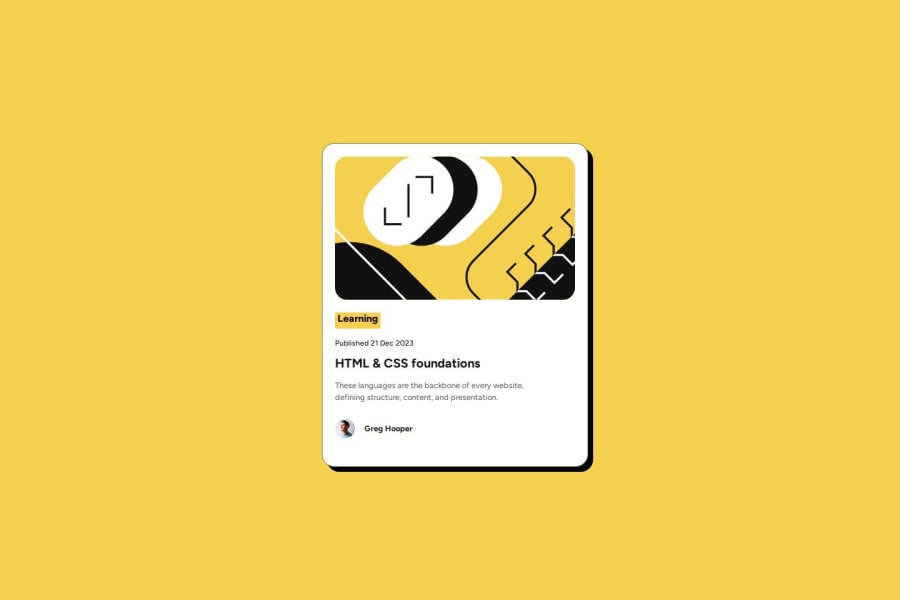
Design comparison
SolutionDesign
Solution retrospective
What are you most proud of, and what would you do differently next time?
I used CSS Variables for colors that simplifies project maintenance and customization, which is a good practice.
What challenges did you encounter, and how did you overcome them?I learned how to use box-shadow to add subtle depth to elements, which enhances the design visually. I also used some aspects of BEM (Block Element Modifier)
What specific areas of your project would you like help with?I intend to continue improving and applying suggestions. For example, in this project I used BEM in the CSS class names and used rem in the fonts instead of pixels. In the next project I also intend to start with a CSS reset.
Community feedback
Please log in to post a comment
Log in with GitHubJoin our Discord community
Join thousands of Frontend Mentor community members taking the challenges, sharing resources, helping each other, and chatting about all things front-end!
Join our Discord
